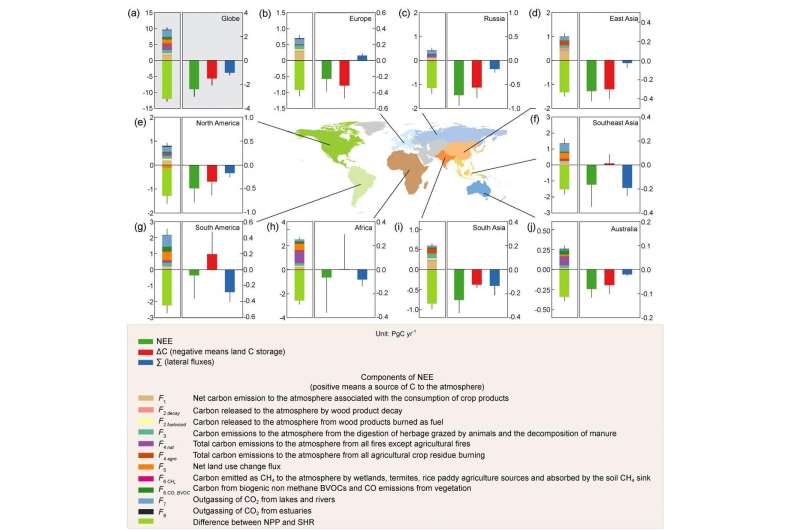Solving the jigsaw puzzle of regional carbon budgets

Accurate regional carbon budgets are critical for informing land-based mitigation policy and tracking mitigation progress. For nine regions covering the globe, inventory estimates of carbon stock changes were collected and complemented by satellite estimates of biomass changes where inventory data are missing. The net land-atmospheric carbon exchange was then calculated by taking the sum of the carbon stock changes measured by inventories and lateral carbon fluxes from crop and wood trade and riverine carbon export to the ocean.
Summing up estimates from all regions, the first global "bottom-up" terrestrial carbon budget of anthropogenic CO2 uptake was obtained, giving a net sink of -2.2 ± 0.6 Pg Cy-1 (one Pg C being one billion tons of carbon) during the period from 2000 to 2009 consistent with the independent top-down budget derived in previous IPCC assessment reports from observations of the CO2 growth rate and fossil fuel emissions. This new estimate set up an important milestone for global carbon cycle studies.
By decomposing the net land-atmosphere carbon flux of each region into incoming and outgoing fluxes, scientists showed that a significant part of the carbon fixed in terrestrial ecosystems by plant productivity is moved away from harvest and export to rivers or lost by fires and by emissions of reduced biogenic carbon species like biogenic volatile compounds and methane. In other words, carbon delivered to the soil as litter and available as a substrate for microbial decomposition is a smaller fraction of productivity that previously estimated by carbon models that ignore lateral export processes.
The implication is that global soil heterotrophic respiration, the amount of CO2 released annually from soil microbial processes, is only of 39 Pg Cyr-1 compared to Net Primary Productivity inputs of 50 Pg Cyr-1. In the study, researchers examined the consequences of a smaller heterotrophic respiration for the residence time of carbon and future projections of the carbon cycle and temperature. They found a positive feedback of 15 parts per million in the future CO2 concentration: that is, an additional warming of 0.1 °C.
More information: Philippe Ciais et al, Empirical estimates of regional carbon budgets imply reduced global soil heterotrophic respiration, National Science Review (2020). DOI: 10.1093/nsr/nwaa145
Provided by Science China Press

















